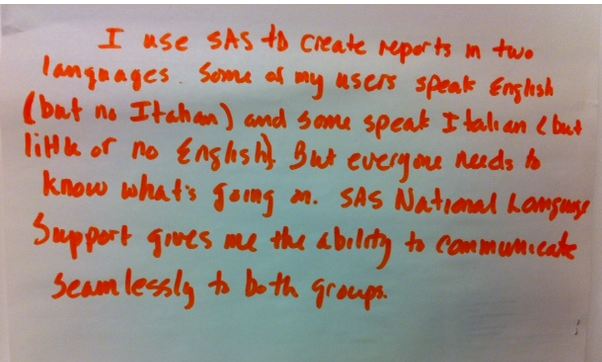If you've never lived outside of your own small town, you might not realize that each country has a distinct way of writing and formatting currency and numbers. This can be a real problem when working with data and code - I'll bet some of you are already aware of that. SAS National Language Support (NLS) 'translates' English data (the way that SAS is accustomed to processing data) into your language format so that your data can be processed successfully.
Software applications that incorporate NLS can avoid dependencies on language-specific or cultural-specific conventions for software features such as:
- character classifications
- character comparison rules
- code sets
- date and time formatting
- interface
- message-text language
- numeric and monetary formatting
- sort order

2 Comments
Different formats are not just because of different countries. In Canada there may be different formats for displaying numbers across different provinces due to bilingualism. This can't be unique to just Canada since many other countries are bilingual as well.
That's a great point Allan.